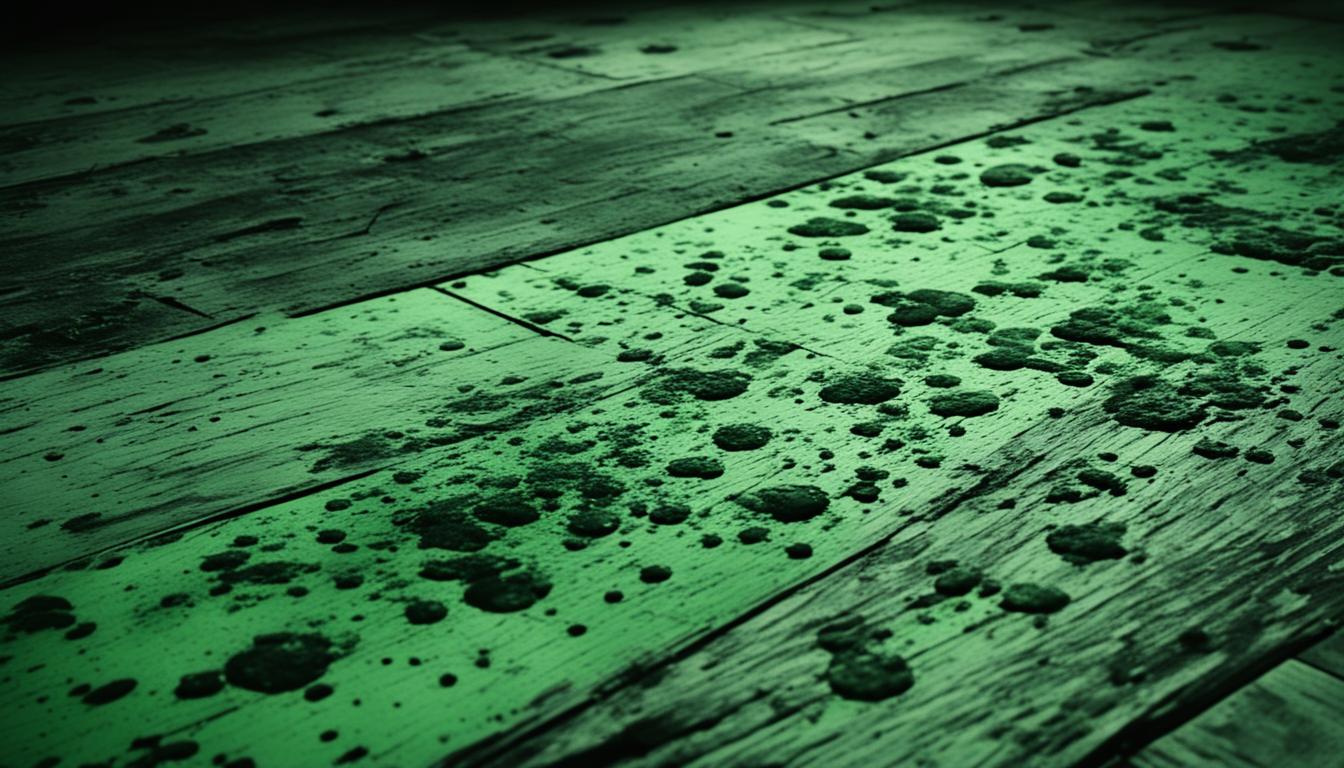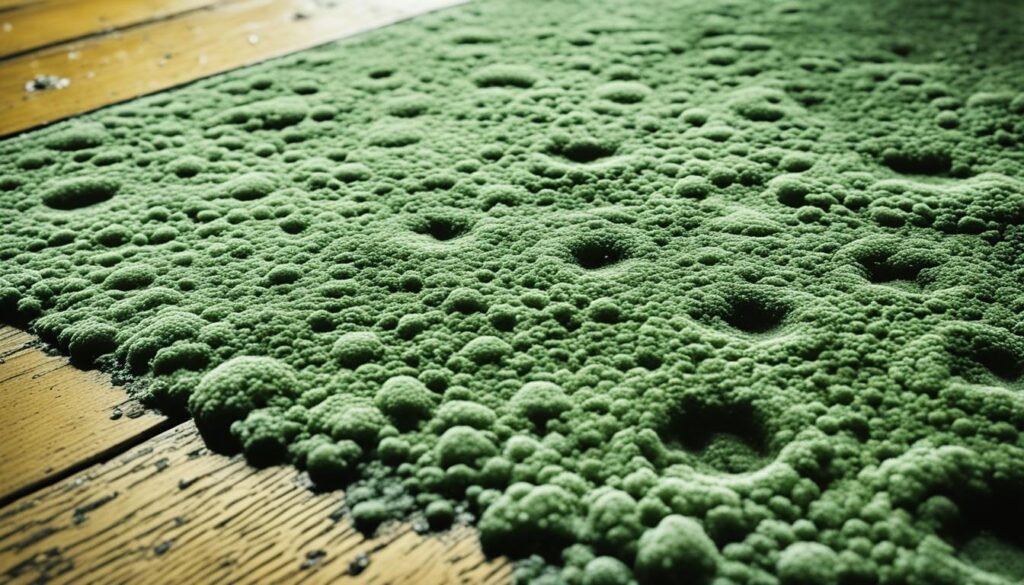
Navigating Through the Challenges of Mold on wood floor
Welcome to our comprehensive guide on dealing with the challenges of mold on wood floors. Mold growth on wood floors can not only be unsightly, but it can also pose significant health risks and compromise the structural integrity of your flooring. In this article, we will explore the difficulties associated with mold on wood floors and provide you with expert advice on effective mold removal and prevention methods.
Mold on wood floors presents several challenges that need to be addressed promptly. One of the major concerns is the potential health risks associated with mold exposure. Mold spores can trigger allergies, respiratory issues, and even more severe health complications in individuals with pre-existing conditions.
Furthermore, mold growth can weaken the structural integrity of your wood floors. As mold spreads, it can cause the wood to rot and decay, leading to costly repairs or, in extreme cases, the need for complete floor replacement.
Timely mold removal is crucial to prevent further damage and protect the health of your household. Ignoring or delaying mold removal can exacerbate the situation and allow the mold to spread to other areas of your home.
Key Takeaways:
- Mold on wood floors can pose significant health risks, including allergies and respiratory issues.
- Mold growth can weaken the structural integrity of wood floors, potentially leading to costly repairs.
- Timely mold removal is essential to prevent the spreading of mold and minimize further damage.
- Regular inspections and preventive measures can help prevent mold recurrence on wood floors.
- Addressing the root cause of mold growth is crucial for effective and long-lasting mold removal.
Effective Methods for Removing Mold on Wood Floors
When it comes to dealing with mold on wood floors, prompt and effective action is crucial. Ignoring the problem can lead to structural damage and potential health risks. In this section, we will explore expert tips and techniques for removing mold from wood floors, ensuring a safe and clean living environment for you and your family.
Addressing the Root Cause
Avoiding mold recurrence starts with identifying and addressing the root cause. Whether it’s excess moisture, poor ventilation, or a leaky pipe, resolving the underlying issue is essential. By eliminating the source of moisture, you can prevent further mold growth and protect your wood floors.
DIY Mold Removal
If the mold growth on your wood floor is limited and not extensive, you may be able to remove it yourself. Here’s a step-by-step guide to DIY mold removal:
- Put on protective gear such as gloves, goggles, and a mask to safeguard yourself against mold spores.
- Ventilate the area by opening windows or using fans to minimize the spread of mold spores.
- Dampen the affected area with water to prevent the release of airborne spores during cleaning.
- Scrub the mold-infested surface using a mixture of mild detergent and water. Remember to use a soft brush or sponge to avoid damaging the wood.
- Rinse the area thoroughly with clean water and ensure it dries completely.
- Inspect the surrounding areas for signs of mold growth and treat them accordingly.
Remember, DIY mold removal is only suitable for small-scale infestations. If you’re dealing with a large or persistent mold problem, it’s best to seek professional help to ensure thorough and effective mold remediation.
Professional Mold Remediation Services
For complex or extensive cases of mold on wood floors, enlisting the services of a professional mold remediation company is highly recommended. These experts have the knowledge, experience, and tools to handle mold removal safely and effectively. They will conduct a thorough inspection, identify hidden mold, and employ specialized techniques to eradicate the problem.
When choosing a professional mold remediation service, look for a reputable company with certifications and a track record of successful mold removal projects. They should also provide comprehensive post-remediation inspections to ensure the mold is completely eliminated, giving you peace of mind.
Preventive Measures for Mold Prevention
Preventing mold growth on wood floors is key to maintaining a healthy living environment. Here are some preventive measures you can take:
- Keep moisture levels in your home under control. Use dehumidifiers, fix leaking pipes, and ensure proper ventilation.
- Regularly inspect your wood floors for signs of moisture or mold, especially in high-humidity areas like bathrooms and basements.
- Immediately address any water damage, such as spills or leaks, to prevent mold growth.
- Implement regular cleaning routines using mold-inhibiting products to minimize the chances of mold growth.
By taking proactive steps to prevent mold, you can protect your wood floors and enjoy a healthy indoor environment.

By following these effective methods for removing mold on wood floors and implementing preventive measures, you can safeguard your home from the detrimental effects of mold growth. Remember, swift action and attention to detail are vital when it comes to mold removal and prevention.
Conclusion
In conclusion, dealing with mold on wood floors can pose significant challenges for homeowners. The presence of mold not only jeopardizes the health of individuals living in the house but also threatens the structural integrity of the flooring itself. It is crucial to address mold issues promptly to prevent further damage and ensure a safe and mold-free living environment.
Regular inspections play a vital role in identifying early signs of mold growth on wood floors. By detecting mold in its initial stages, homeowners can take immediate action and mitigate the risk of mold spreading. Prompt mold removal is essential to prevent the mold from spreading to other areas of the house and causing more extensive damage.
In addition to timely mold removal, ongoing maintenance is crucial to prevent mold recurrence. This includes maintaining proper ventilation, controlling humidity levels, and promptly addressing any water damage or leaks. By implementing preventive measures, homeowners can create an environment that is less conducive to mold growth and protect the longevity of their wood floors.
Overall, the key to successfully navigating the challenges of mold on wood floors lies in taking immediate action, conducting regular inspections, and implementing preventive maintenance measures. By prioritizing the health of their homes and addressing mold issues promptly and effectively, homeowners can ensure a safe, mold-free environment for themselves and their families.




